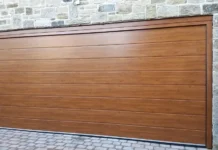Suppose you are staying at home, minding your business, and suddenly you feel that the room is getting warmer than usual. Before you panic and call the air conditioning guy, have some patience. Why?
Well, you will end up paying the AC technician money for something that you could easily do yourself. The reason is that in most cases involving the AC malfunctioning or not performing up to the mark, the problem is the Thermostat. A thermostat is an essential component of a home heating and cooling system, maintaining a comfortable temperature year-round. However, like any device, it can sometimes run into issues. If you’re looking for the answer why your thermostat isn’t working, then you’re in the right place. This guide will explore common problems and provide step-by-step solutions to get your thermostat back on track. Usually, you can fix the thermostat yourself as it does not require extensive knowledge or skills.
Let us see the most common reasons behind a non-working thermostat.
Common Reasons Why Thermostats Fail
1. Dead Batteries
One of the most frequent causes of thermostat issues is simply dead batteries. Many people forget that thermostats, especially non-wired ones, rely on batteries to operate. If the display is blank or unresponsive, it could be a sign that the batteries need replacing. It’s a good practice to change your thermostat’s batteries once a year to avoid this problem.
2. Tripped Circuit Breaker or Blown Fuse
Your thermostat could lose power due to a tripped circuit breaker or a blown fuse in your home’s electrical system. This is more common in wired thermostats. Check your electrical panel for any tripped breakers or blown fuses and reset or replace them as needed. This simple step can often restore power to your thermostat.
3. Dirt and Debris
Over time, dust and debris can accumulate inside your thermostat, affecting its sensitivity and ability to read the correct temperature. This can lead to your heating or cooling system not turning on when it should. Gently opening the thermostat and carefully cleaning its interior with a soft brush or compressed air can resolve this issue.
4. Age and Wear
Like any appliance, thermostats can wear out over time. Older models, especially mechanical ones, are more prone to wear and tear, which can affect their functionality. If your thermostat is old and starting to have frequent issues, it might be time to consider upgrading to a more modern, digital model.
5. Improper Installation
If your thermostat was recently installed, improper installation could be the culprit. Incorrect wiring or placement can lead to several issues, including erratic temperature control. It’s important to ensure that all connections are secure and correct. If you’re unsure, it’s always a good idea to consult a professional.
6. Incorrect Settings
Sometimes the issue is simply that the thermostat is set incorrectly. Ensure it’s on the right mode (heating or cooling) and that the settings (like scheduled times and temperatures) are what you expect. Also, check that it’s not set to ‘off’ or ‘fan only,’ as these settings won’t activate your heating or cooling system.
7. System Malfunction
Occasionally, the problem lies not with the thermostat itself but with the heating or cooling system. Issues like a malfunctioning furnace, air conditioner, or wiring can manifest as thermostat problems. If you suspect this is the case, it might be time to call a professional.
Troubleshooting a Problematic Thermostat
There are several DIY fixes that you can rely upon to fix a thermostat.
1. Batteries & Wiring
Facing a blank thermostat screen? Start by replacing the batteries. If the screen remains off, your next step is to check for a blown fuse or a tripped circuit breaker. In most cases, these simple checks and fixes can resolve thermostat issues.
2. Clean It Up
Dust and dirt can interfere with your thermostat’s functionality. Carefully remove the cover and use a can of compressed air to gently clear away any accumulated debris. Keeping your thermostat clean ensures it operates efficiently.
3. Check the Mode
An incorrect setting might be the reason behind your thermostat issue. Double-check to ensure it’s set to the appropriate mode, whether heating or cooling, based on your current needs.
4. Adjust the Temperature
Not all thermostats automatically adjust the temperature. If your home isn’t reaching the desired temperature, try manually setting the thermostat to a higher or lower temperature, depending on whether you need heating or cooling.
5. Incorrect Placement
The thermostat’s location is crucial for accurate temperature readings. It should be placed in a room with a neutral temperature – away from kitchens or drafty windows, which can skew its readings. The thermostat uses the ambient temperature to gauge and adjust the home’s overall climate.
6. Call a Professional
If you’ve tried these steps and your thermostat still isn’t functioning correctly, it may be time to consult a professional. When choosing a technician, do a quick review check to ensure reliable and quality service.
Conclusion
A non-functioning thermostat can be a source of discomfort in your home. By understanding the common causes and following these troubleshooting steps, you can often resolve the issue yourself. However, don’t hesitate to seek professional help if needed to ensure your home’s heating and cooling system is functioning optimally.
FAQs
Why is my Thermostat not Turning On?
A common problem that thermostat users experience is that it refuses to turn on regardless of how many times you click on the on or temperature control buttons. It can be highly frustrating, especially if you wish to cool down or feel warm during the winter.
Why is my Nest Thermostat not cooling?
Nest thermostats are more advanced than your ordinary thermostats and expensive too. So, one expects them to work fine without running into issues. But that is not the case as a non-cooling nest thermostat is a common problem.
Why is my thermostat on but not controlling the temperature?
This could be due to incorrect mode settings or a calibration issue. Ensure it’s set to the correct heating or cooling mode and try recalibrating the temperature settings.
How do I know if my thermostat is broken?
Signs of a broken thermostat include unresponsiveness, incorrect temperature readings, or frequent temperature fluctuations. If basic troubleshooting doesn’t resolve these issues, the thermostat may need replacing.
How often should I replace the batteries in my thermostat?
It’s a good practice to replace your thermostat’s batteries once a year to prevent them from running out unexpectedly.
Can the location of my thermostat affect its performance?
Absolutely. A thermostat placed in direct sunlight, near a kitchen, or in a drafty area can give false readings, leading to inefficient heating or cooling.













